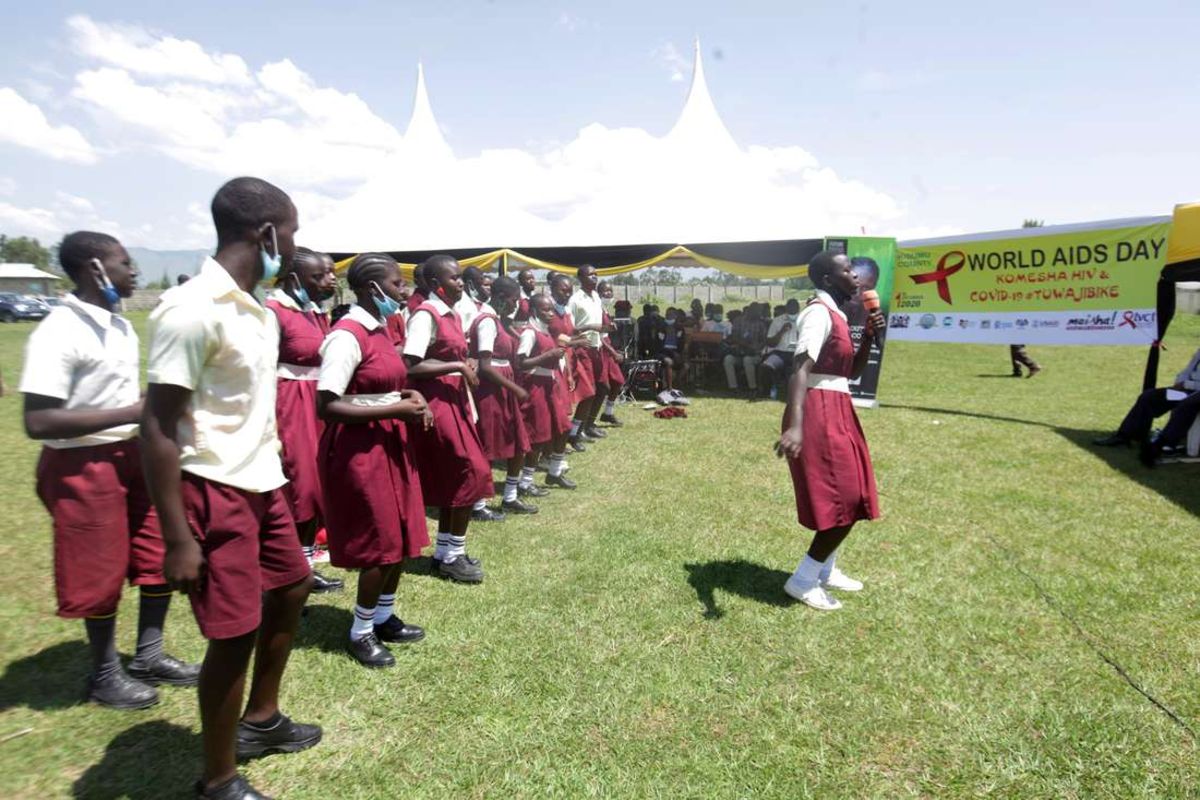

Steve Juma, founder of County Youth and Adolescent Network, based in Homa Bay County, recently handled a rather perturbing disagreement between two youth in a sexual relationship.
The boy broke up with the girl because he found a condom in her handbag. Yet, the condom was for her protection in case of an attack – and for their use when having a sexual relation.
“He perceived her as promiscuous,” said Mr Juma when he shared the experience during a December 1, Ending the HIV/Aids Epidemic: Taking stock of Kenya’s progress over the past decade webinar by Amref Health Africa.
Mr Juma was emphasising on the importance of including men and boys in HIV/Aids prevention programs, noting that unequal gender power relations restrict girls from exercising their authority over their bodies.
“Even if you empower them (girls) 10 times; she does not have the power (to have sex or not-and with or without protection) when she meets with the boyfriend,” he said.
During the commemoration of World Aids Day 2020, themed Ending the HIV/Aids Epidemic: Resilience and Impact, on December 1,UN Kenya highlighted the huge impact of gender inequality in dragging fight against HIV/Aids.
“Gender inequality restricts women’s control in deciding how, when and with whom they (can) have sex, increasing their vulnerability to HIV infection,” tweeted UN Kenya.
In a call for collective action, it said: “Let’s fight for gender equality, human rights and healthcare for all.”
In Sub-Saharan Africa, three in four new HIV infections among 15-19 year-olds are among girls, according to UNAids data. This can be attributed to the fact that majority of the adolescents cannot make independent decisions about their sexual and reproductive health.
More than half (52 per cent) of adolescent girls and young women in rural areas are unable to make decisions about their own health, compared with 47 per cent in the urban areas, further provides UNAids.
Their risk of being infected is, however, reduced by 50 per cent when they complete secondary school, notes the UN agency.
Mr Juma urged the government to establish adolescent-friendly health facilities, identifying it as a way of encouraging infected teenagers to take their Anti-Retroviral Drugs (ARVs).
“Those under care are afraid of going to the general hospitals to collect their medicines. They fear being seen by their relatives,” he said.
In December 2013, during the high-level ministerial meeting of Ministers of Education and Health held in Cape Town, South Africa, Kenya alongside 19 other countries signed a ministerial commitment on comprehensive sexuality education and sexual and reproductive health services for adolescents and young people in Eastern and Southern African (ESA).
In 2015, the government adopted National Adolescent Sexual and Reproductive Health Policy, which dictates provision of age-appropriate comprehensive sexuality education and friendly 10-19 years sexual and reproductive health services (SRHS) by Ministry of Health.
In an earlier interview with Amref Health Africa, Group Chief Executive Officer Dr Githinji Gitahi, he said “we are late in implementing the policy.”
“The problem has not been the policy or anything else. The problem is implementation,” he said.
He gave an example on how local solutions can be applied in creating awareness on adoption of SRHS.
“When we started training the Maasai community on family planning some years ago, it was very difficult because they don’t discuss these things,” he said.
“Then somebody actually found out that their goats and sheep are walking around with a plastic thing hanging under their belly… after investigating they found out that they do not want their goats and sheep to get pregnant during the dry season.”
From then on, they started using the example to sensitise themselves on family planning.
“So they started conceptualising that ‘oh! So you are telling us to do this so that our women don’t die?”
Article first published on nation.africa
Achuman Emoni stretches her hands, illustrating the vast distance she has travelled to reach the…
During a session held at Africa Health Agenda International Conference in Kigali, Rwanda, on 4th…
Amref Health Africa, in collaboration with the Turkana County Department of Health Services, introduced the…
Amref Health Africa, in collaboration with the Turkana County Department of Health Services, introduced the…
Over the past six years, Amref Health Africa has positioned itself as a leading voice…
Africa has made significant strides in advocating for health research and development, yet gaps in…